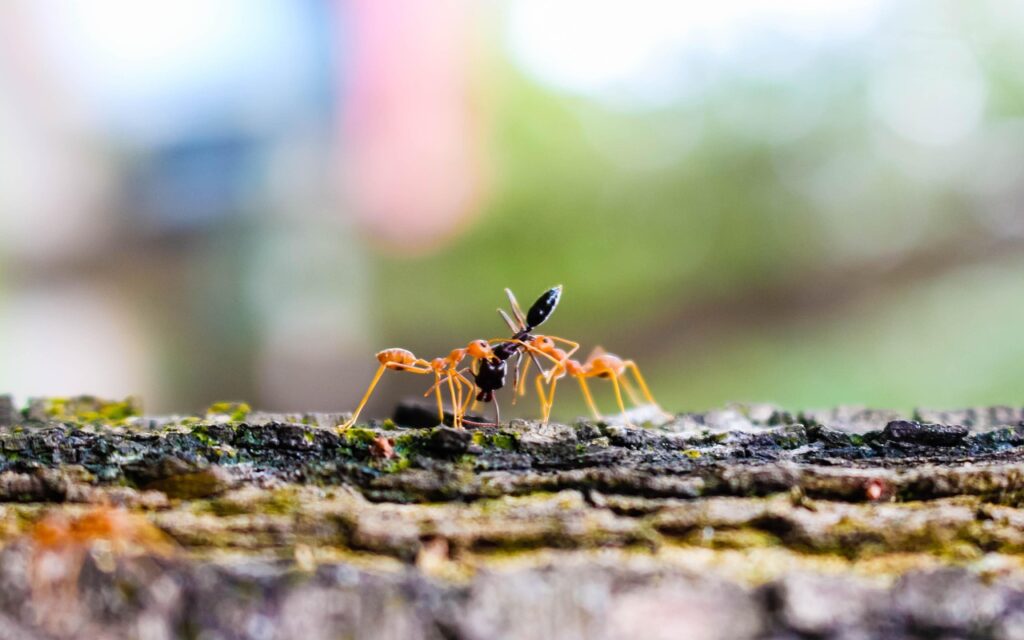Lab activity: Relationships between species
The term symbiosis (from the Greek sym, meaning « together » and bios, meaning « life ») refers to the members of two different species (i.e., two populations) having some sort of ecological interaction that affects both populations. Here are some of the theoretical types of interactions that can evolve over many generations. When two species evolve in response to each other’s activities, the process is known as coevolution.
Obligate Mutualism
Termites and their Flagellates
The termite and its intestinal flagellate symbionts exemplify Obligate
Mutualism: Neither organism can survive without the other.
Flowering Plants and Insect Pollinators
Insect pollinators receive vital nutrients (in nectar and pollen itself) from their plant partners. The plant receives courier service: pollinators deliver pollen (male) directly to the female parts of the flower. Without pollinators, many insect-pollinated plants would go extinct due to lack of fertilization.
Protocooperation
The Clown Fish and its Sea Anemone partner
both benefit from the relationship: Nemo gets a safe home that protects him from predators, and he fiercely protects his sea anemone from predators. He also feeds the anemone. How cute is that?
Competition

The Green Anole (Anolis carolinensis) is native to the southern United States. In the 1960’s, The Brown Anole (Anolis sagrei) was introduced from Cuba. The two species vie for habitat and food resources, and it appears that the exotic Brown Anole has displaced the native Green Anole in some physical spaces, such as lower shrubbery and grass. The Green Anole generally lives higher up in the trees and foliage than the Brown Anole does. This result of competition is known as resource partitioning.
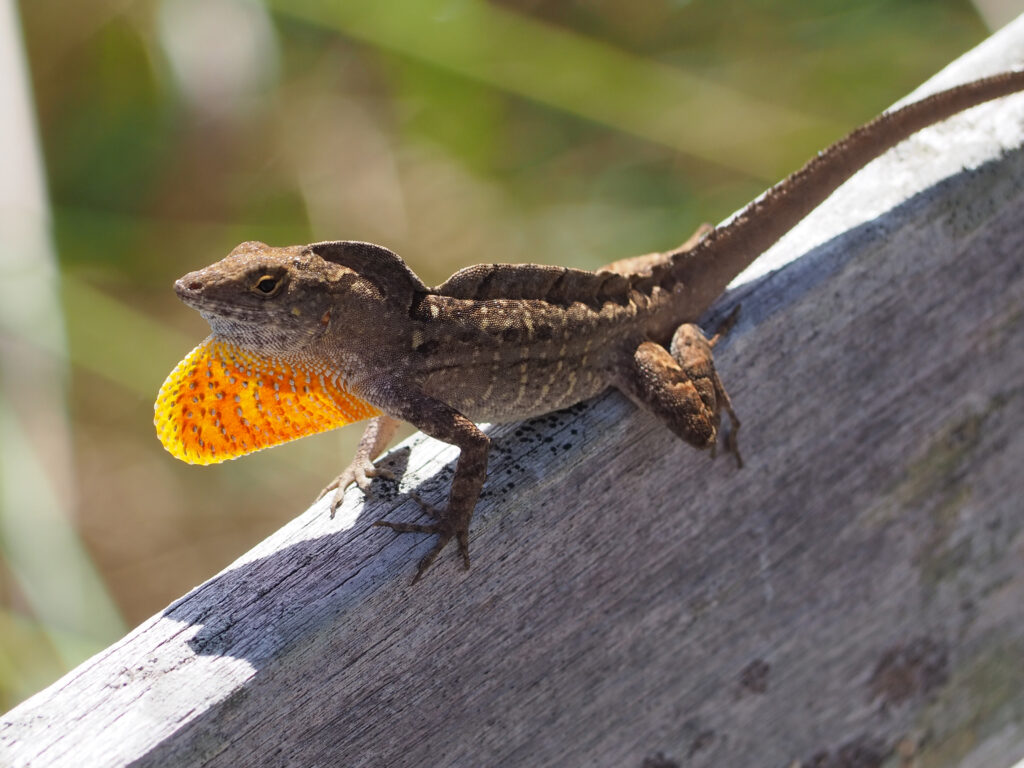
Neutralism

In a case of true neutralism, two populations interact, but neither would have any effect on the evolutionary fitness of the other. Because all organisms in an ecosystem are interconnected in some way, true neutralism is not likely to occur, and would be very difficult to prove. The term is often used to describe interactions in which the effects of two populations on each other are simply negligible. Say….a Bactrian Camel and a Mongolian Ground Jay, both living in the Gobi desert.
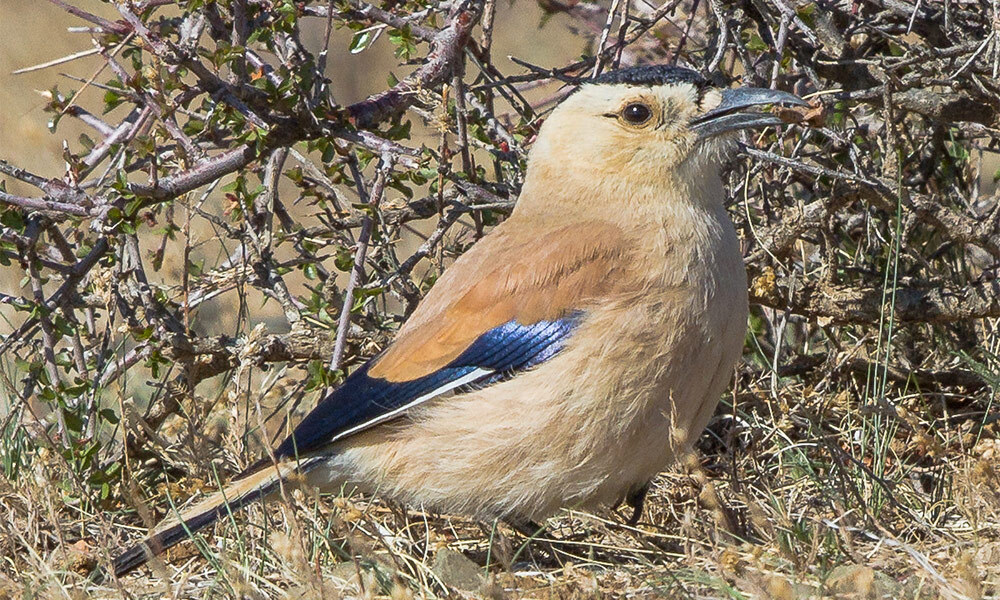
Predation
This is possibly the most familiar type of symbiosis. The predator species (in the illustration below, the Lion (Panthera leo)) kills and consumes the prey species (in this case, a Cape Buffalo (Syncerus caffer). You can no doubt think of dozens of other examples of predation.
Predation has driven the evolution of some truly amazing phenomena, such as crypsis (camouflaging coloration), aposematism (warning coloration), mimicry, and other ways animals avoid being eaten.
Some results of predation:
Some Interesting Coevolutionary: Camouflage and Warning Coloration
aposematism/aposematic coloration – warning coloration (poisonous or venomous species)
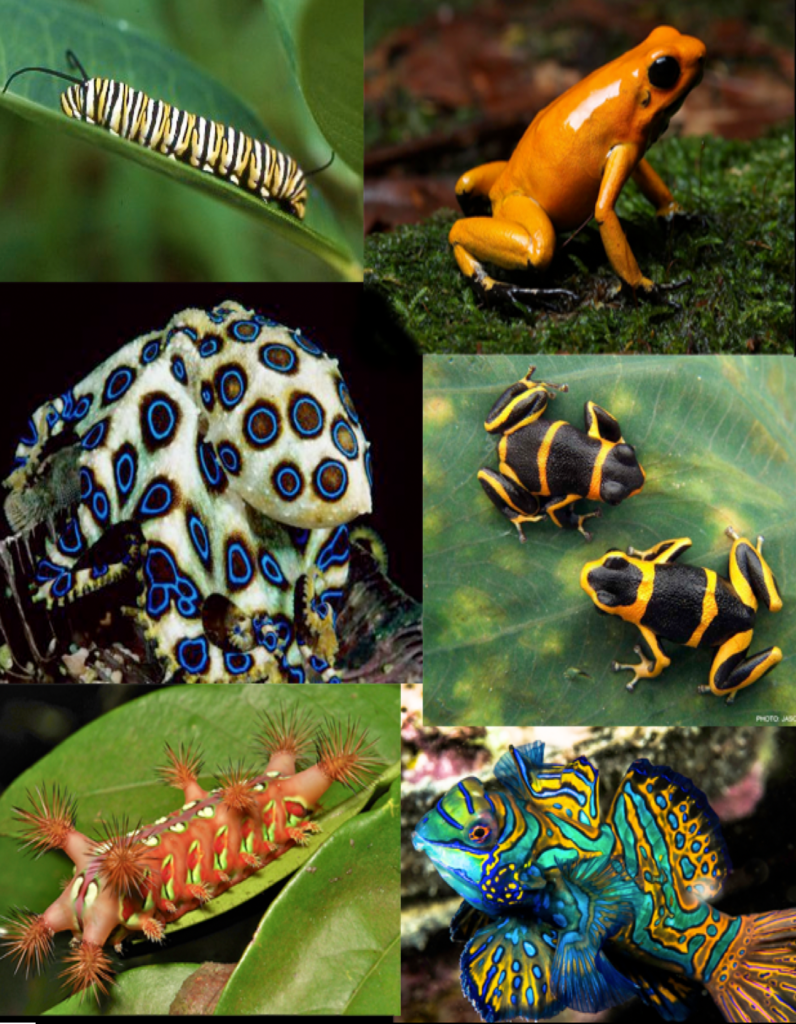
Results of predation:
mimicry – a species has evolved the superficial appearance of something else
Batesian Mimicry – a harmless mimic looks like a toxic model.
examples:
▪ Harmless Viceroy butterfly mimics poisonous Monarch butterfly With predictable results…
Non-venomous Kingsnake mimics venomous coral snake
Parasitism
A parasite is an organism that takes up residence in or on a host organism and feeds on the host’s body without killing it outright.An organism that is host to an adult parasite is known as the definitive host. An organism that is host to a juvenile parasite is known as an intermediate host. The definitive host is usually a predator of the intermediate host, and the life cycle is completed when the definitive host eats the intermediate host, freeing the larval forms to take up residence, as shown below in the tapeworm life cycle.
Parasitoidism
A parasitoid acts as a parasite of its host until some critical point of its life cycle–such as metamorphosis from juvenile to adult or onset of reproduction–at which point it kills the host. If you recall the movie « Alien » then you’ve seen Hollywood’s best representation of a parasitoid. But there’s nothing a sci-fi horror writer can invent that nature hasn’t already done better
Commensalism
In this case, one species benefits from the presence of another, which is not affected by the presence of the first species. An example is the Cattle Egret. As large grazers move through the grass, they stir up insects. Cattle Egrets follow them and get a banquet. The large grazers are neither helped nor harmed by the presence of the birds.
Amensalism
Amensalism occurs when species A impedes the success of species B, but is neither positively nor negatively affected by the presence of the species B. This is commonly the effect when one species produces a chemical compound (as part of its normal metabolic reactions) that is harmful to the other species.
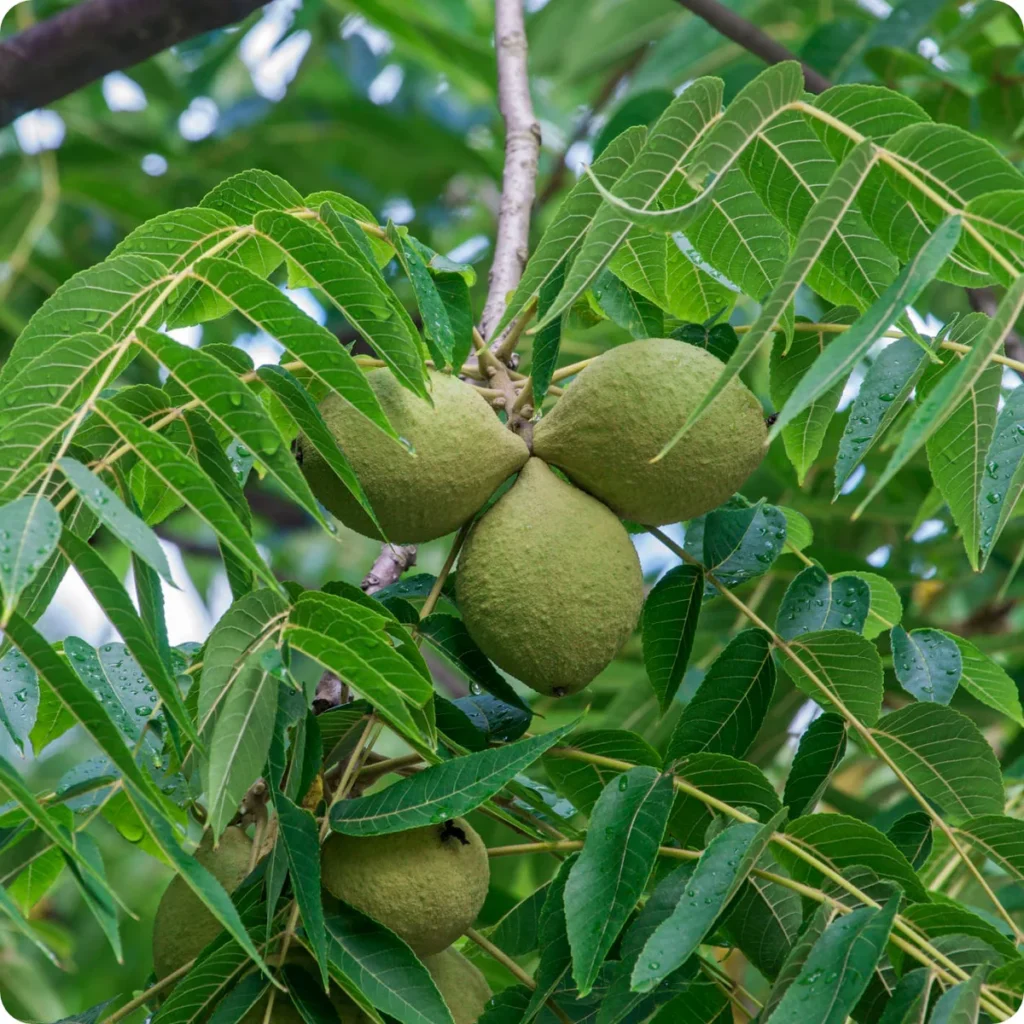
Allelopathy, in which some plants produce chemical compounds that inhibit the growth of nearby would-be competitors, is one type of amensalistic interaction. For example, the Black Walnut Tree (Juglans nigra) produces compounds in its roots that inhibit the growth of other trees and shrubs.
Then :
Can you complete the next table with :
« +« means that the population benefits from the interaction
« – » means that the population is harmed by the interaction
« 0 » means that the population is not affected by the interaction
| type of interaction | pop’n A | pop’n B | nature of effect |
| obligate mutualism | |||
| protocooperation | |||
| competition | |||
| neutralism | |||
| predation | |||
| parasitism | |||
| parasitoidism | |||
| commensalism | |||
| amensalism |
to complete the table you can have help from the slideshow

